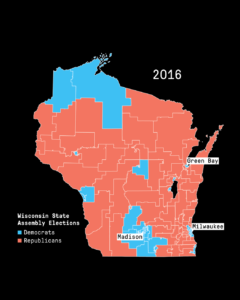Yesterday while stuck in traffic I noticed that the dynamically priced express lanes were nearly empty *and* the price to use them was quite high. This seemed odd, as I thought that if the lanes weren’t being used, the price would come down to encourage drivers to use them. It seems like a straightforward optimization problem.
The twist is that the express lanes are privatized, so the operators price the lanes to maximize profit, not, as I had assumed, to optimize traffic flow. This different objective lead to different behavior in the system.
This is a nice, simple example of how every applied math problem depends on many different assumptions, some of which might be hidden from view. It’s also a good example of how math can be used to better understand the different approaches to managing public resources.
Note: I originally posted this on Mastodon. Jeremy Kun posted some nice resources in response, including this paper surveying the research on the topic and a link to the Transportation Research Board’s Managed Lanes Committee.




